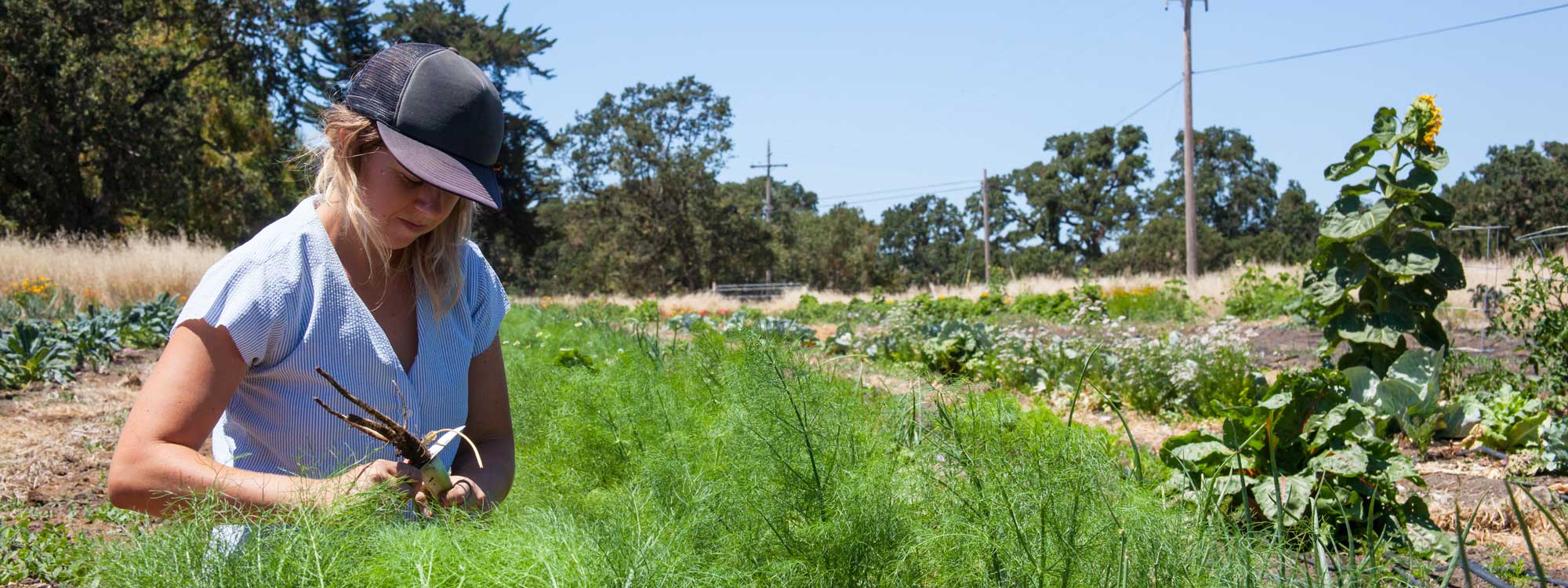While our demand for locally-grown food steadily rises—particularly after biting into a fresh Sebastopol apple or a luscious tomato from Sonoma—few of us realize that access to land is a major barrier facing the farmers and ranchers who produce our favorite fruits, vegetables, and sustainability-raised chickens and beef.
As part of our work to break down the barriers to farming and ranching in the Bay Area, Greenbelt Alliance joined with our partners in the Sonoma County Food System Alliance to co-sponsor the Growing Our Farms workshop in Santa Rosa. (Watch a video of the event here)
The half-day event held at the fairgrounds in Santa Rosa brought together about 200 farmers, landowners, public and government officials, and advocates who explored ways increase the availability of land for food production in Sonoma County. Land costs, housing and commercial development, and competition from vineyards have contributed to the challenge of farming and ranching in the North Bay and around the Bay Area. When local farmers can’t make a living and can’t find land to farm, we all lose. Regionally-produced food becomes harder to find and precious farmlands get converted to other uses. At Growing Our Farms, I met several enterprising farmers.
Sheera and Joaquin Duerigen from Tortillas del Tierra make handmade whole wheat quinoa tortillas and other healthy combinations from organic and heirloom ingredients. Right now, they sell only at farmers markets in Marin and Sonoma counties, but are looking for acreage to plant and grow organic corn.
Rachel Kohn Obut successfully designed and established a small working farm and resident garden for Sweetwater Spectrum and Lunita Farm, a residential community for adults with autism in Sonoma. She attended Growing Our Farms looking for new opportunities to farm in the North Bay.
Another up-and-coming farmer named Mike said he spent a few years as a traveling farmer with the international work exchange on organic and sustainable properties program (aka WWOOFing). He recently settled in Willits and grows food, but said he also needs alternate sources of income to make ends meet.
Rachel, Mike, and the Duerigens’ stories are just a few examples of the barriers that our local farmers and ranchers face.
Leasing land is one promising option. “Leasing land to a farmer has many benefits, including a steady revenue stream, farm improvements, such as fencing and water infrastructure, which add property value, and helping to meet resource goals on the property,” said Frederick Smith of California FarmLink, a nonprofit that is funded to help farmers and landowners negotiate long-term leases. “It’s not only the soon-to-be retiring ranchers and farmers who should consider leasing their land. Rural residential properties may be part of the solution. Even a few acres can be enough for a new farmer to start a successful farm.”
In Sonoma County, more than 4,500 acres of public land owned by Regional Parks, Open Space District and General Services are currently leased to local farmers and ranchers and are an important part of Sonoma County’s local food system.
At the Growing Our Farms workshop, Supervisor Shirlee Zane touted a new Sonoma County farm incubator project on public land between Rohnert Park and Santa Rosa. Situated in a community separator, plots in the 45-acre parcel owned by the open space district are available for leasing at a reduced rate for up to five years so new farmers can try their hands at the business of growing produce or raising livestock.
If you have land that might be farmed or are a farmer seeking land, let Greenbelt Alliance know and we’ll connect you with the folks who can help. Contact Teri Shore, Regional Director in the North Bay at 707-575-3661.
Photo: Zoe Meyers ©




